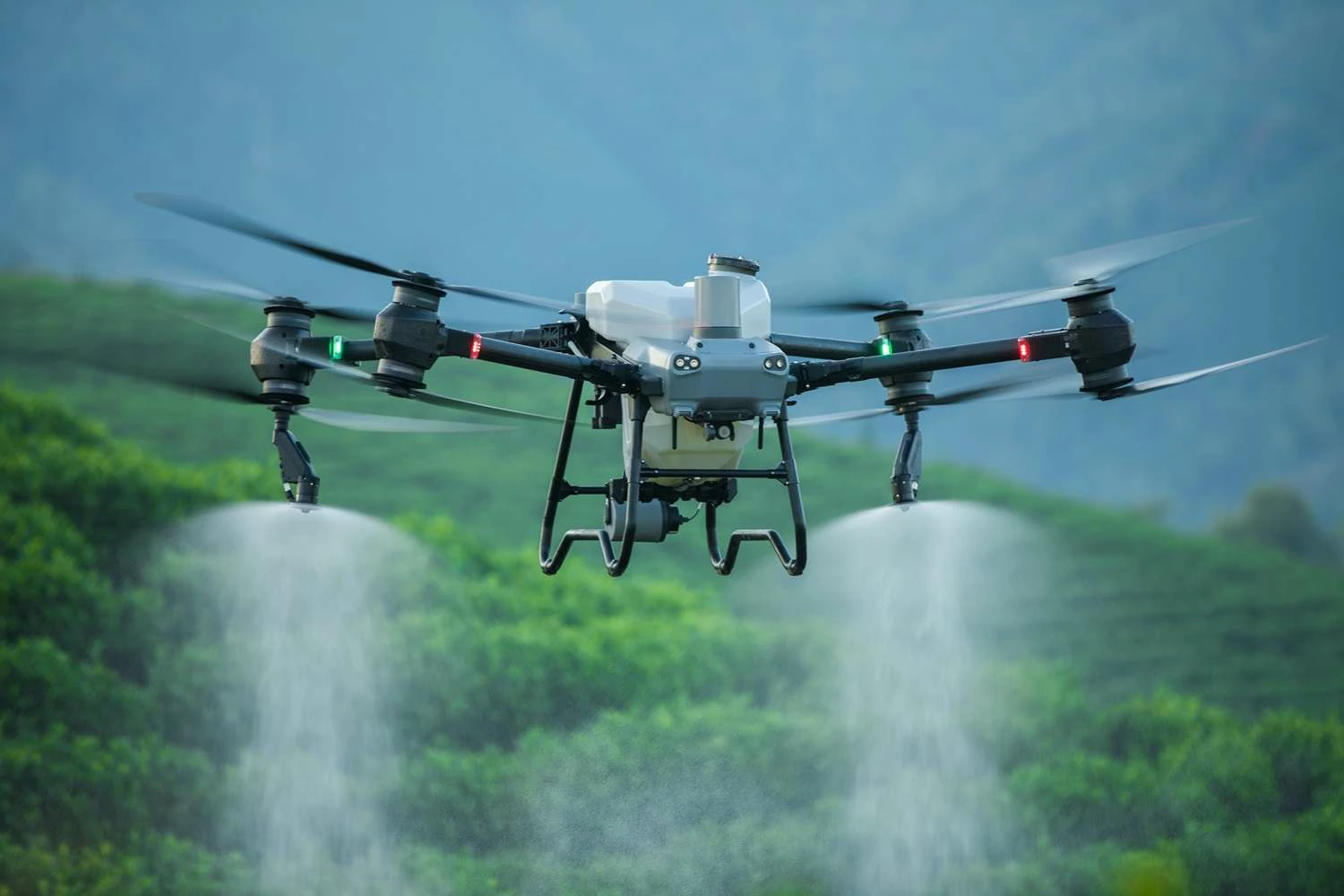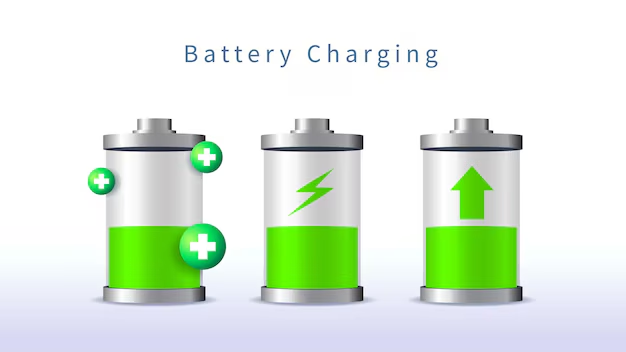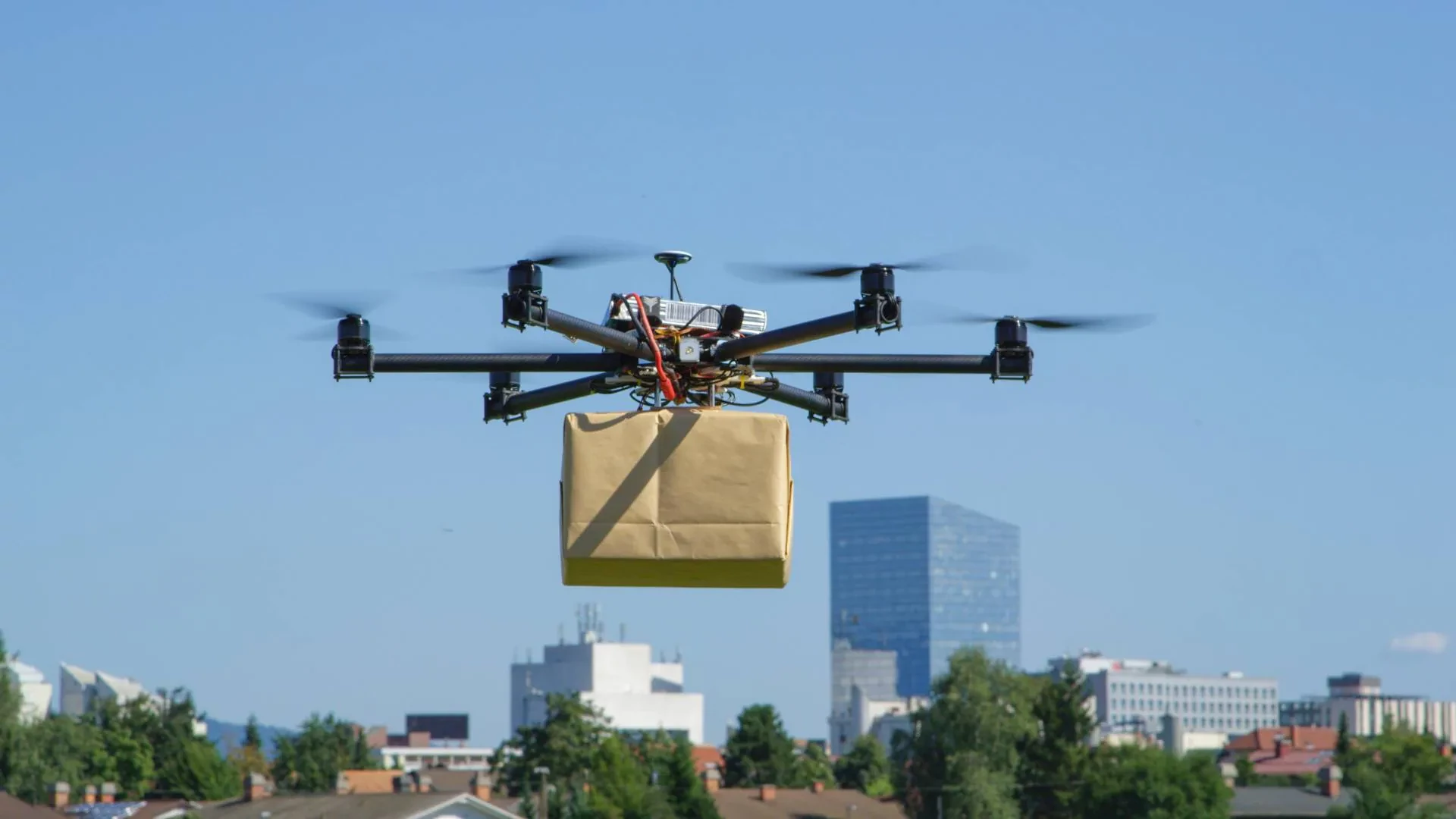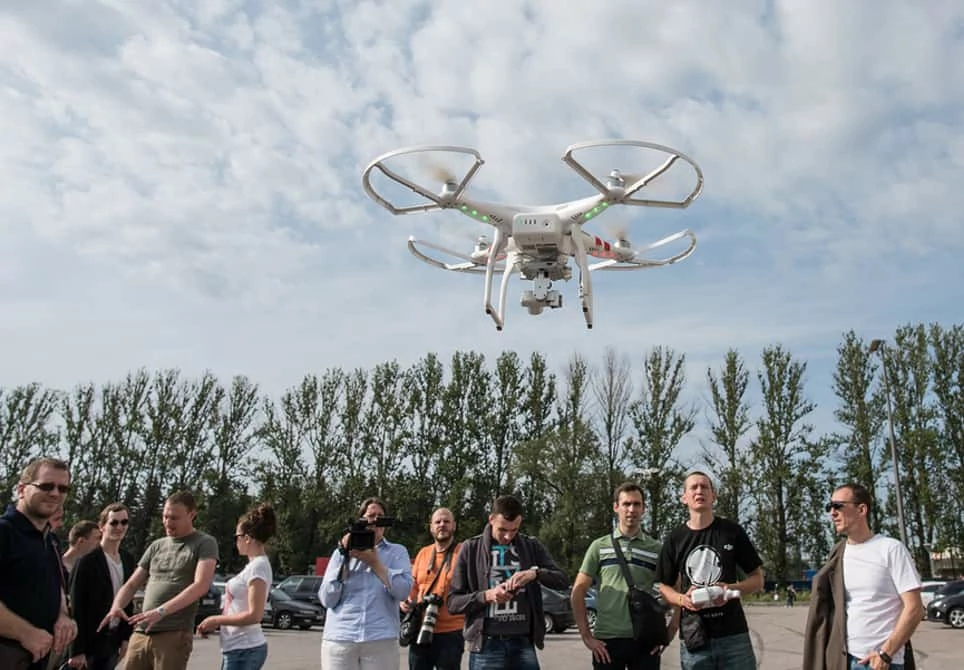Can drone batteries be taken on a plane? (Updated to the new regulations of 2025)
As a drone enthusiast or for other purposes, have you ever wondered if you can take your drone batteries and drone battery devices on a plane?
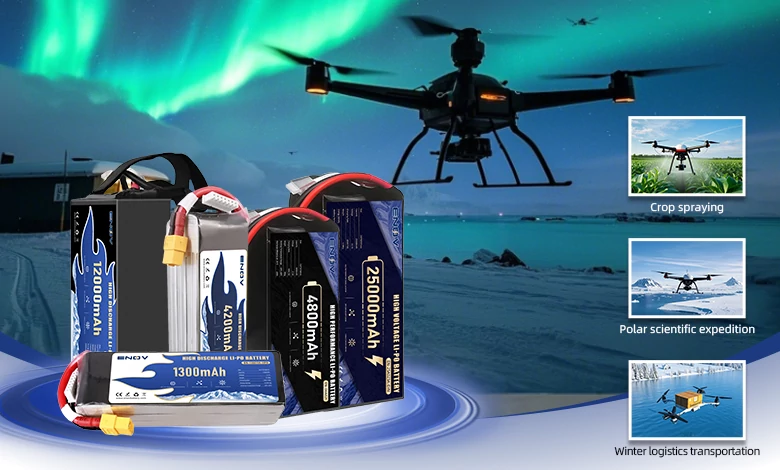
ENOV High-Energy drone batteries power industrial and commercial drones. Delivering 220–320 Wh/kg energy density, they enable long flight times (30+ mins) and support fast charging (2C). Perfect for aerial photography, surveillance, and delivery drones.
The answer is: Yes. Most airlines have the following requirements:
Small drone batteries (≤100 Wh) are allowed. The quantity requirements vary among major airlines, so you need to check in advance. Batteries must be carried with you and checked baggage is prohibited.
Medium-sized drone batteries (100–160 Wh) generally cannot exceed two in number. Some airlines require advance reporting, and they also need to be carried with you and cannot be checked in.
Large batteries (>160 Wh) are explicitly prohibited by major airlines, whether carried by hand or checked in.
I.Specific requirements of major international airlines
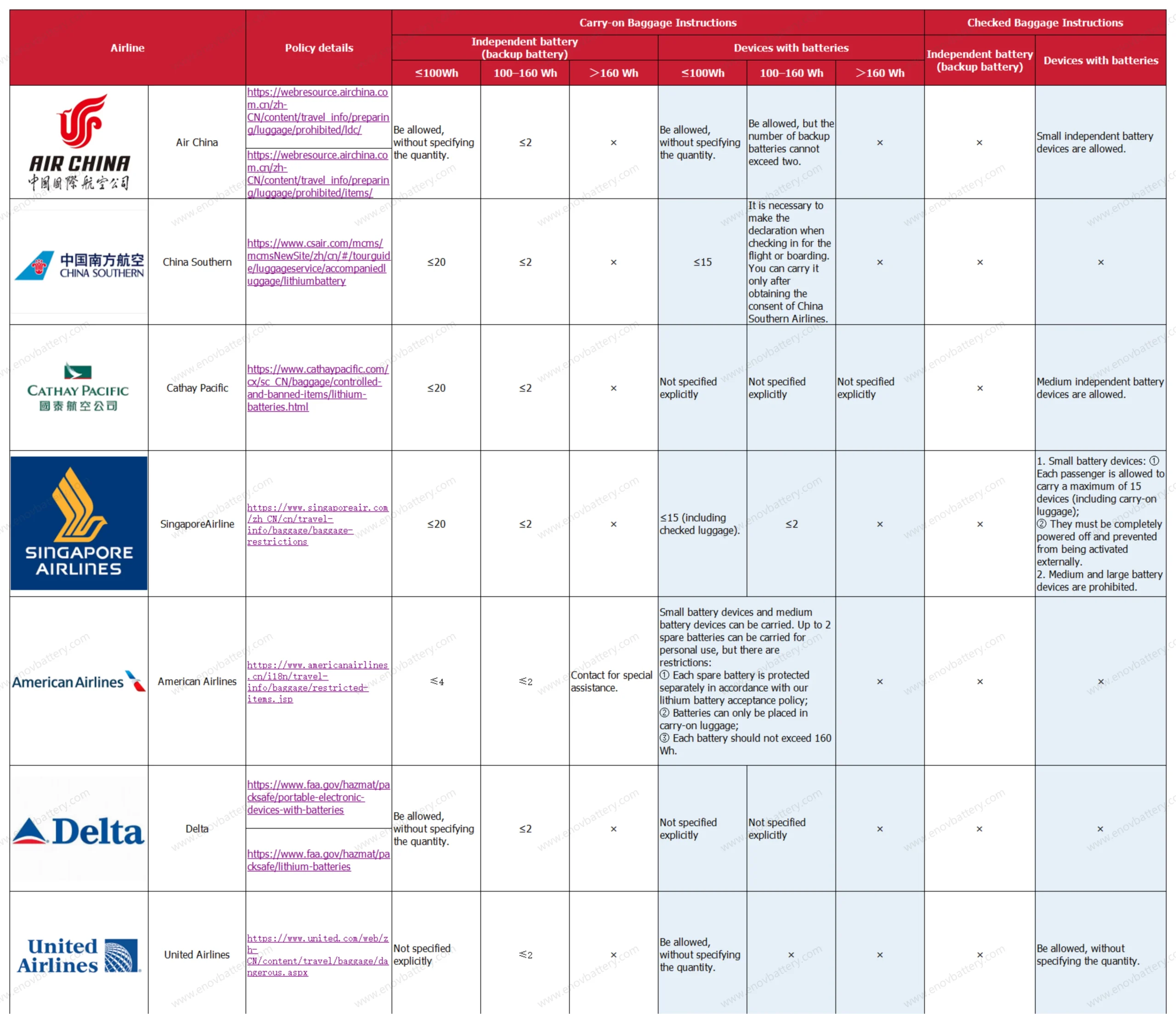
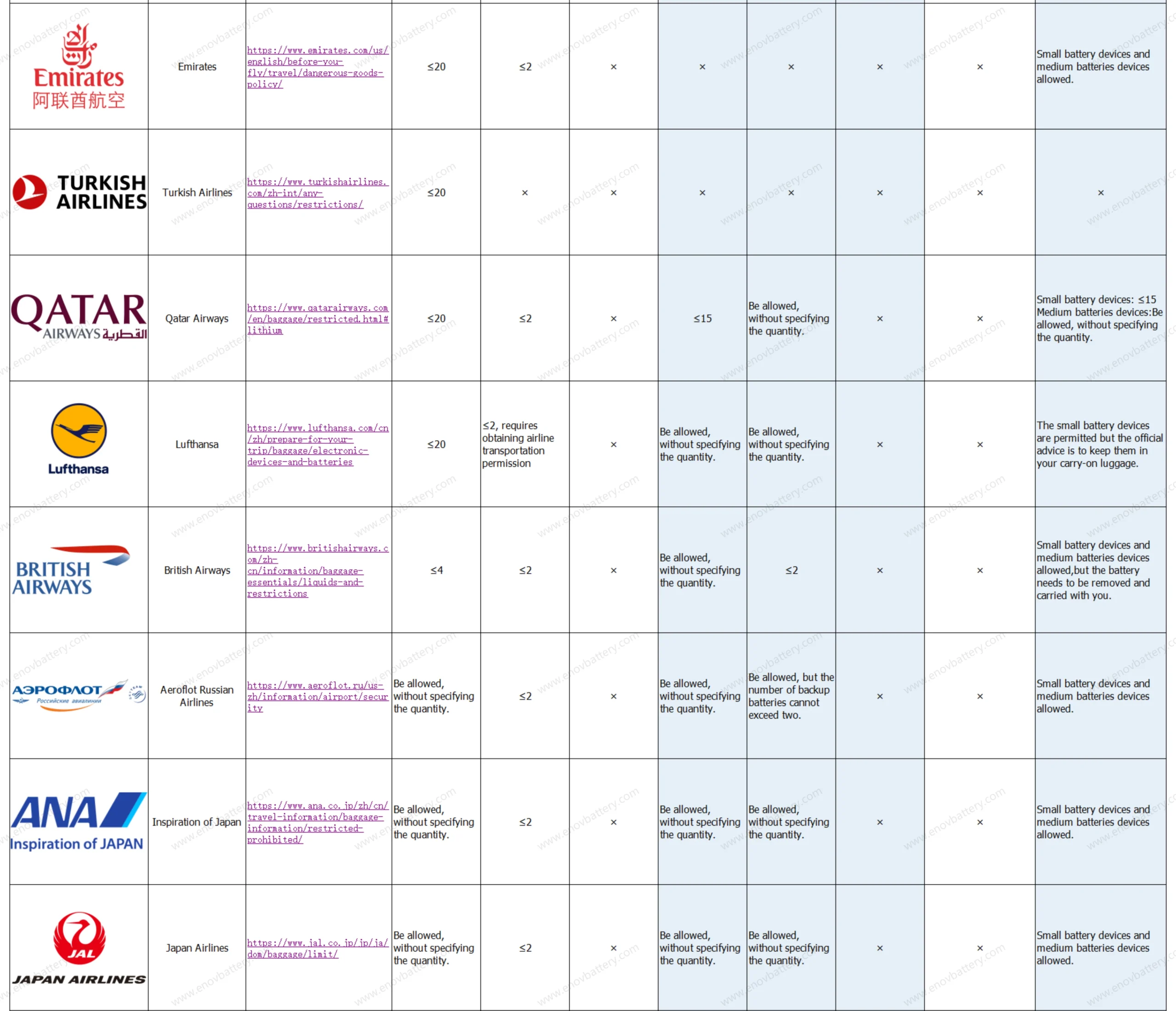
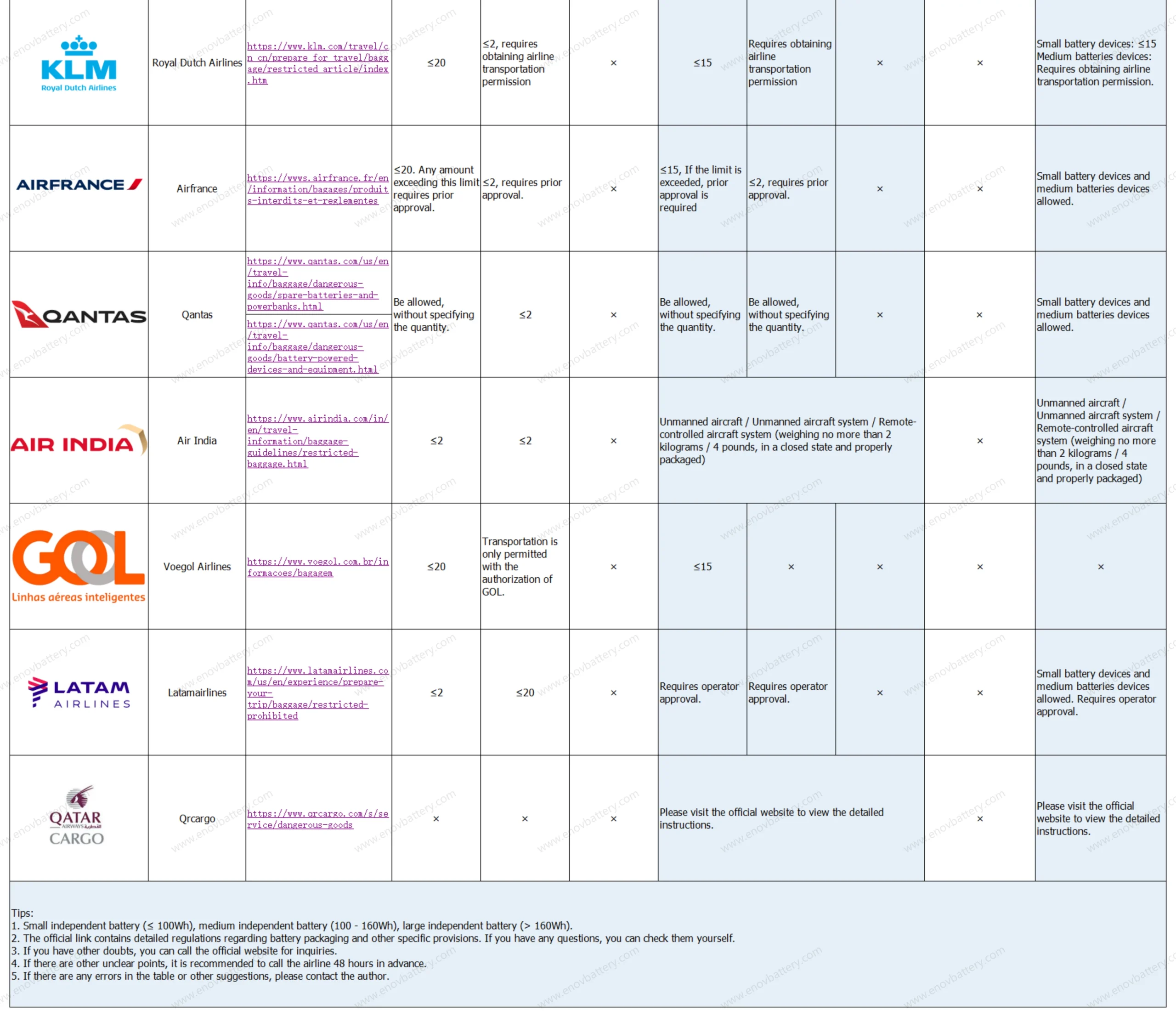
II. How to calculate the watt-hour of your drone battery?
1. Watt-hour calculation formula:
Watt-hours (Wh) = battery voltage (V) × battery capacity (Ah)
2.Key parameter description:
① Voltage: The nominal voltage of the battery. Drone batteries are usually composed of multiple cells connected in series (such as 3S, 6S), and the nominal voltage is the voltage of a single cell (3.7V) multiplied by the number of series connections. For example:
3S battery: 3.7V × 3 = 11.1V
6S battery: 3.7V × 6 = 22.2V
② Capacity: The nominal capacity of the battery.
If the capacity unit is milliamp-hours (mAh), it needs to be converted to amp-hours (Ah):
Watt-hours (Wh) = voltage (V) × capacity (mAh) ÷ 1000
3.Example illustration
A 4S battery with a capacity of 1500mAh is calculated as follows: voltage = 3.7V × 4 = 14.8V, watt-hours = voltage × capacity = 14.8V × (1500mAh ÷ 1000) = 22.2Wh
III. In which abnormal conditions are batteries not allowed to be taken on the plane?
① The battery is swollen, leaking, or has an odor.
② Recalled batteries.
③ Batteries that have been soaked in water.
④ The battery cannot be used normally or has abnormal use, including but not limited to sudden drop in power or sudden power failure, inability to charge, etc.
⑤ Batteries that have been used too many times, as they have a higher risk of failure.
⑥ Abnormal battery software and communication, such as the drone cannot recognize the battery.
⑦ The battery has been subjected to a violent impact.
Kind reminder: Do not casually discard drone batteries with abnormal conditions in the trash can. Please contact the seller for recycling.
IV. How to package the battery properly?
1. Battery insulation treatment:
① Use a lithium-polymer flame-retardant battery bag, which is both fireproof and short-circuit proof.
② Use a hard battery box with independent foam slots to separate the batteries to prevent impact.
③ Directly use the original packaging box, which has weaker protection than the previous two.
Kind reminder: Avoid directly sticking tape on the terminals for insulation, as it is easy to leave residue at high temperatures; it is recommended to store each battery independently in the battery bag/box to avoid contact between metal objects (such as keys, coins) and the electrodes.
2. Battery discharge treatment:
Discharge the battery to 40%-65% before departure. A fully charged battery can easily accelerate battery aging and spontaneous combustion. Manual discharge can be done one or two days in advance. DJI batteries have an automatic discharge function (set a 4-10 day dormant period).
3.Quick security check tips:
① Put all batteries in a transparent bag/box, take them out actively during security check and inform the security inspector that “the batteries have been insulated”. Avoid storing them too secretly, which may lead to unpacking and re-inspection.
② For special airports with enhanced inspection, you should arrive two hours in advance and prepare battery parameter labels, such as model: TB60, capacity: 3850mAh, voltage: 15.4V.
Quick inquiry
Drop us a line, and we’ll get back to you within 24 hours.

Ariana Yuan
Digital Operations Manager
Website Planning|Marketing Project Management for Drone Batteries|Scheduled Content Refresh|SEO Optimization

Ariana Yuan
Digital Operations Manager
Website Planning|Marketing Project Management for Drone Batteries|Scheduled Content Refresh|SEO Optimization
